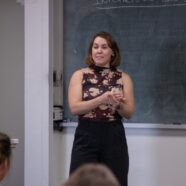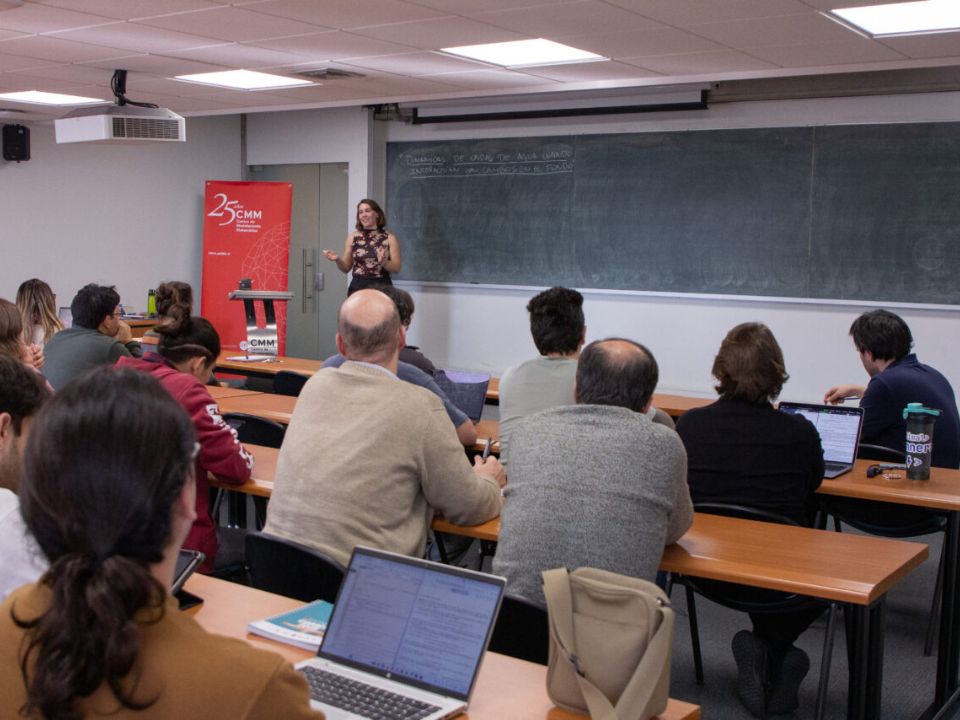
On Tuesday, August 26, at 4:15 p.m., the first DIM Colloquium of the spring semester, organized by the Department of Mathematical Engineering of the Faculty of Physical and Mathematical Sciences of the University of Chile, was held in the Von Neumann seminar room located on the 7th floor of the Center for Mathematical Modeling (CMM).
The presentation was given by Professor María Eugenia Martínez, a DIM academic who completed her undergraduate studies at the U. Nacional de Río Cuarto and then entered our department’s doctoral program in 2017, from which she graduated with honors in September 2021.
She then completed a postdoctoral fellowship at the University of Paris in 2022, with specialists in the description of viscous and non-viscous fluids and water waves, before moving to the University of Lyon to complete a postdoctoral fellowship between 2023 and 2024 with Professor Francesco Fanelli, a specialist in the Navier-Stokes equation in dynamic environments of rotation and low viscosity.
This year, she joined the DIM and CMM as an assistant professor at the University of Chile. Her area of expertise is viscous and non-viscous fluid equations, where she has made recent advances such as the description of solitary wave movements over variable backgrounds.
Her talk, entitled “Dynamics of water waves when interacting with changes in the environment”, focused on Zakharov’s water wave system, which explores how these waves behave when their environment varies. This model describes the movement of an incompressible and irrotational fluid under the influence of gravity, confined by a rigid bottom and a free surface at the top.
During the conference, she emphasized: “Although solitary waves are well understood in the case of a flat bottom, we are interested in analyzing what happens when the bottom topography changes—for example, when the wave encounters a sudden elevation or depression in the seabed. This gives rise to a regime of interaction between the wave and the variable bottom, in which both the speed and shape of the wave evolve dynamically”.
The complete recording of this DIM Colloquium is available on the YouTube channel of the Department of Mathematical Engineering at the University of Chile.
By Iván Tobar Bocaz, CMM Communications.
Info and photo: Departamento de Ingeniería Matemática de la Universidad de Chile.
Posted on Sep 5, 2025 in News




 Noticias en español
Noticias en español

